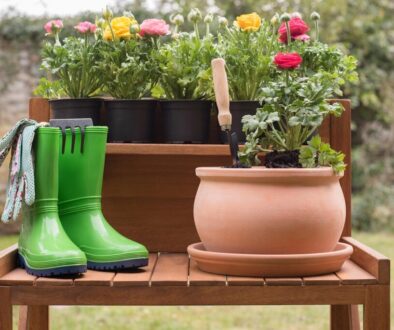Easy-to-Grow Roses for Beginners: Your Guide to a Blooming Garden
Roses have a reputation for being fussy, but don’t let that scare you! With the right varieties, even beginners can grow stunning roses. Imagine stepping into your garden and being greeted by vibrant blooms and a sweet fragrance. Sounds dreamy, right? The secret lies in choosing easy-to-grow roses that thrive with minimal effort. Let’s dive into the world of beginner-friendly roses and turn your garden into a floral paradise.
Why Start with Easy-to-Grow Roses?
If you’re new to gardening, starting with low-maintenance roses is a game-changer. These varieties are hardy, disease-resistant, and forgiving of minor mistakes. You won’t need to be a rose whisperer to keep them happy. Plus, they reward you with gorgeous blooms that make all your efforts worthwhile. Think of them as the friendly neighbors of the rose world—always there to brighten your day without demanding too much in return.
Beginner-friendly roses are perfect for testing your green thumb. They adapt well to different soil types and climates, so you don’t have to stress about perfect conditions. Whether you have a sunny backyard or a cozy balcony, there’s a rose for you. And the best part? You’ll gain confidence as you watch your roses flourish, paving the way for more ambitious gardening projects.
 Top Easy-to-Grow Rose Varieties for Beginners
Top Easy-to-Grow Rose Varieties for Beginners
Not all roses are created equal, and some are practically made for beginners. Here are a few foolproof options to get you started:
- Knock Out Roses: These are the superheroes of the rose world. Knock Out roses are disease-resistant, drought-tolerant, and bloom non-stop from spring to fall. You’ll love their vibrant colors and carefree nature.
- Floribunda Roses: If you want a rose that produces clusters of blooms, Floribundas are your go-to. They’re hardy, low-maintenance, and come in a rainbow of colors. Perfect for adding a pop of color to your garden.
- Shrub Roses: Known for their ruggedness, shrub roses are versatile and easy to care for. They’re great for borders, hedges, or standalone features in your garden.
- Drift Roses: These compact roses are ideal for small spaces or containers. They’re disease-resistant and bloom profusely, making them a favorite among beginners.
Choosing the right variety is half the battle won. Once you’ve picked your roses, it’s time to get your hands dirty and plant them.
 Planting Your Roses: A Step-by-Step Guide
Planting Your Roses: A Step-by-Step Guide
Planting roses might sound intimidating, but it’s simpler than you think. Start by selecting a sunny spot—roses love at least six hours of sunlight daily. Next, prepare the soil by adding organic matter like compost. This gives your roses the nutrients they need to thrive.
Dig a hole twice as wide as the root ball and just as deep. Gently place the rose in the hole, making sure the roots are spread out. Fill the hole with soil, water thoroughly, and add a layer of mulch to retain moisture. That’s it! You’ve just planted your first rose.
Remember to space your roses properly to allow air circulation. This prevents diseases and ensures healthy growth. If you’re planting in containers, choose a large pot with drainage holes and use high-quality potting mix.
 Caring for Your Roses: Tips for Success
Caring for Your Roses: Tips for Success
Once your roses are planted, a little care goes a long way. Water them regularly, especially during dry spells, but avoid overwatering. Roses prefer deep, infrequent watering over shallow, frequent ones. This encourages strong root growth.
Fertilize your roses every 4-6 weeks during the growing season. Use a balanced rose fertilizer to promote healthy blooms. Don’t forget to deadhead spent flowers to encourage new growth. It’s like giving your roses a little pep talk to keep them blooming.
Pruning is another key aspect of rose care. Trim your roses in early spring to remove dead or damaged wood and shape the plant. Don’t worry—pruning isn’t as scary as it sounds. Just follow the basic guidelines, and your roses will thank you with lush growth.
 Troubleshooting Common Rose Problems
Troubleshooting Common Rose Problems
Even easy-to-grow roses can face challenges, but don’t panic. Most issues are easy to fix. If you notice yellow leaves, it could be a sign of overwatering or nutrient deficiency. Adjust your watering schedule and add fertilizer if needed.
Pests like aphids and spider mites can sometimes bother your roses. A simple solution is to spray them with a mixture of water and mild soap. For fungal diseases like black spots or powdery mildew, ensure good air circulation and avoid wetting the leaves when watering.
The key is to catch problems early and address them promptly. With a little attention, your roses will bounce back stronger than ever.
Enjoying the Fruits of Your Labor
Growing roses is a rewarding experience, especially when you see those first blooms. Take time to enjoy your garden—sit back, relax, and soak in the beauty. Share your success with friends and family, or even cut a few blooms to brighten up your home.
Remember, gardening is a journey, not a destination. Don’t be afraid to experiment and learn as you go. With easy-to-grow roses, you’re off to a fantastic start. So grab your gardening gloves, pick your favorite varieties, and let the blooming begin!
Final Thoughts
Starting your rose-growing journey doesn’t have to be daunting. By choosing easy-to-grow varieties and following simple care tips, you’ll soon have a garden full of stunning roses. Whether you’re a complete beginner or a seasoned gardener looking for low-maintenance options, these roses are sure to delight.
So, what are you waiting for? Dive into the world of roses and discover the joy of gardening. With a little patience and care, you’ll be rewarded with blooms that bring color, fragrance, and happiness to your life.
Happy Gardening!






